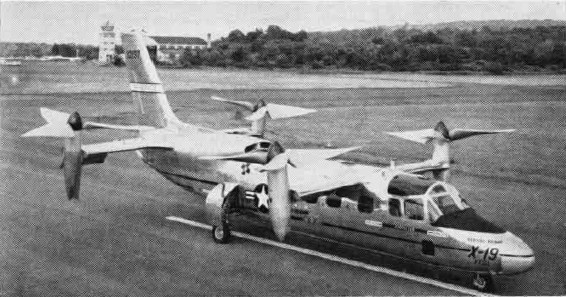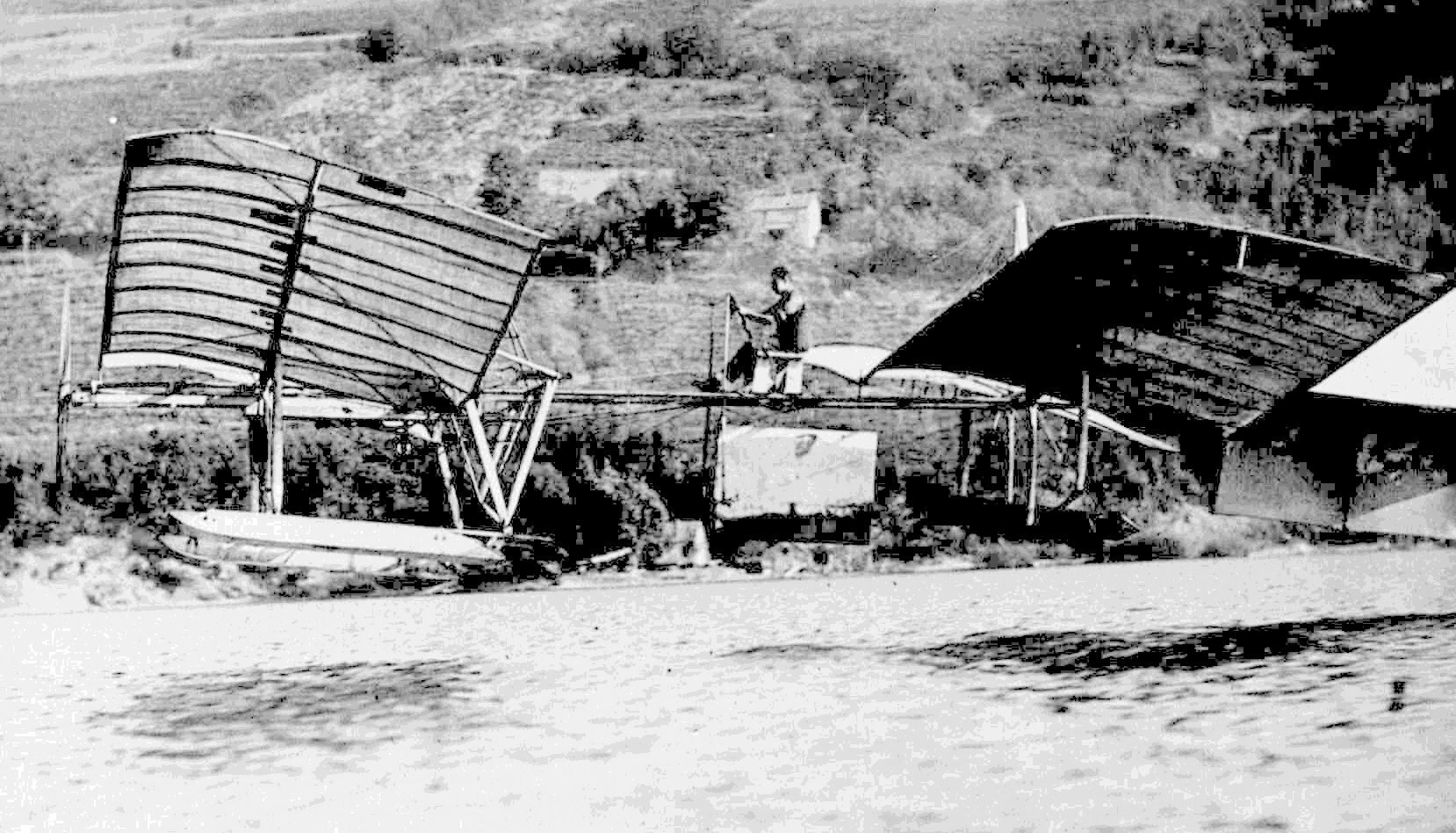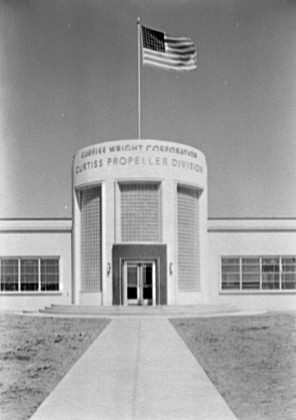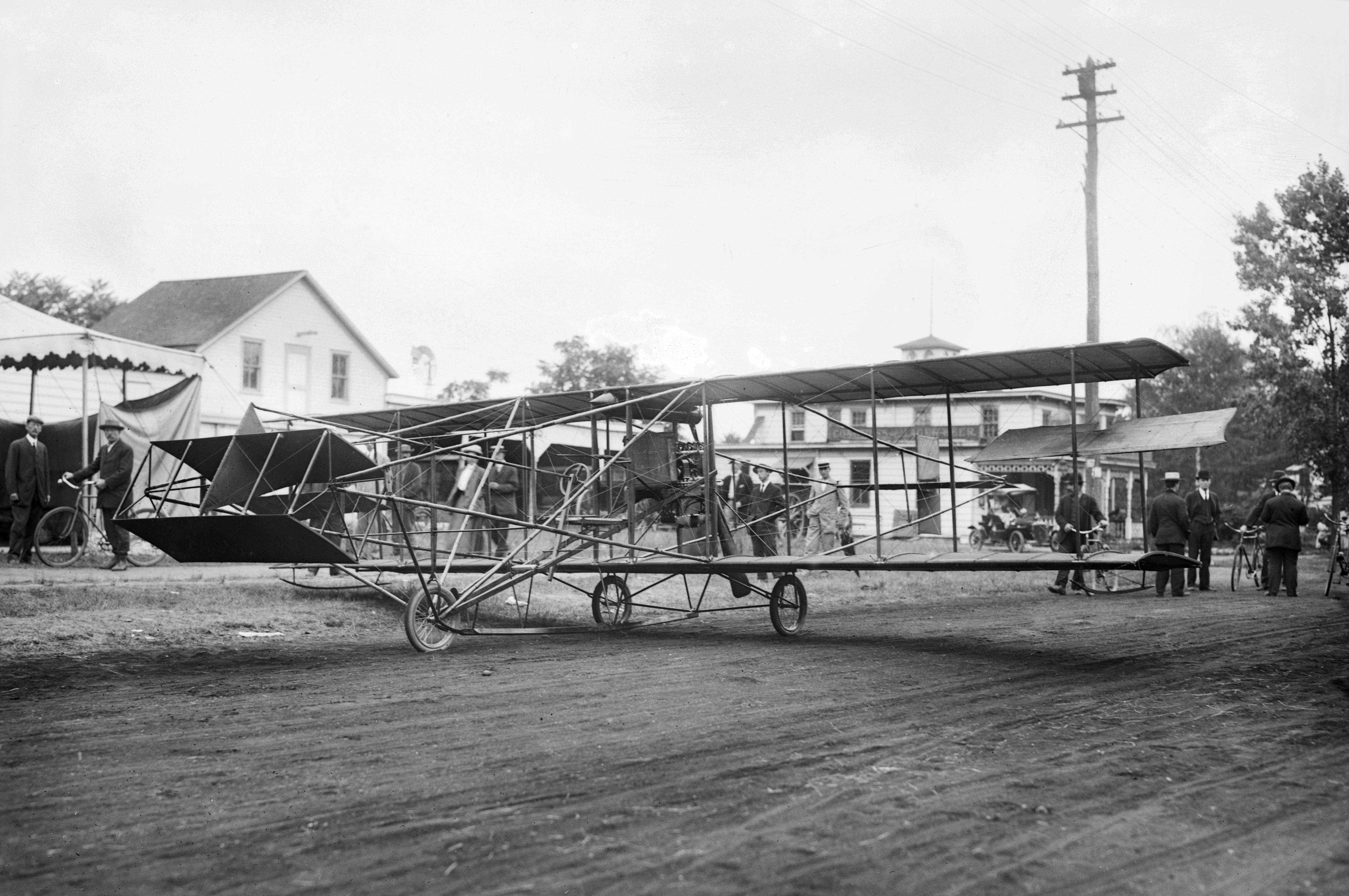|
X-19
The Curtiss-Wright X-19, company designation Model 200, was an American experimental tiltrotor aircraft of the early 1960s. It was noteworthy for being the last aircraft of any kind manufactured by Curtiss-Wright. Design and development In March 1960 the Curtiss-Wright Corporation developed the X-100, a prototype for a new, vertical takeoff transport aircraft. The X-100 had a single turboshaft engine, which propelled two tilting-propellers, while at the tail swivelling nozzles used the engine's exhaust gases to give additional control for hovering or slow flight. Although sometimes classified as a tiltrotor aircraft, the design differed from the Bell VTOL XV tiltrotor designs. The X-19 utilized specially designed radial lift propellers, rather than helicopter-like rotors, for vertical takeoff and augmenting the lift provided by the wing structures. From the X-100 Curtiss-Wright developed the larger X-200, of which the United States Air Force ordered two prototypes designated th ... [...More Info...] [...Related Items...] OR: [Wikipedia] [Google] [Baidu] |
Tiltrotor Aircraft
A tiltrotor is an aircraft which generates lift and propulsion by way of one or more powered rotors (sometimes called ''proprotors'') mounted on rotating shafts or nacelles usually at the ends of a fixed wing. Almost all tiltrotors use a transverse rotor design, with a few exceptions that use other multirotor layouts. Tiltrotor design combines the VTOL capability of a helicopter with the speed and range of a conventional fixed-wing aircraft. For vertical flight, the rotors are angled so the plane of rotation is horizontal, generating lift the way a normal helicopter rotor does. As the aircraft gains speed, the rotors are progressively tilted forward, with the plane of rotation eventually becoming vertical. In this mode the rotors provide thrust as a propeller, and the airfoil of the fixed wings takes over providing the lift via the forward motion of the entire aircraft. Since the rotors can be configured to be more efficient for propulsion (e.g. with root-tip twi ... [...More Info...] [...Related Items...] OR: [Wikipedia] [Google] [Baidu] |
Tandem-wing Aircraft
QAC Quickie Q2 A tandem wing is a wing configuration in which a flying craft or animal has two or more sets of wings set one behind another. All the wings contribute to lift. The tandem wing is distinct from the biplane in which the wings are stacked one above another, or from the canard or "tail-first" configuration where the forward surface is much smaller and does not contribute significantly to the overall lift. In aviation, tandem wings have long been experimented with, but few designs have ever been put into production. Tandem wings in nature occur only in insects and flying fish, although in the past there have been tandem-wing flying dinosaurs. Design principles A tandem wing configuration has two main wing planes, with one located forward and the other to the rear. The difference is greater than the wing chord, so there is a clear gap between them and the aircraft centre of gravity (CG) lies between the wings.Bottomley (1977) Compared to the conventional layout, ... [...More Info...] [...Related Items...] OR: [Wikipedia] [Google] [Baidu] |
Tandem Wing
QAC Quickie Q2 A tandem wing is a wing configuration in which a flying craft or animal has two or more sets of wings set one behind another. All the wings contribute to lift. The tandem wing is distinct from the biplane in which the wings are stacked one above another, or from the canard or "tail-first" configuration where the forward surface is much smaller and does not contribute significantly to the overall lift. In aviation, tandem wings have long been experimented with, but few designs have ever been put into production. Tandem wings in nature occur only in insects and flying fish, although in the past there have been tandem-wing flying dinosaurs. Design principles A tandem wing configuration has two main wing planes, with one located forward and the other to the rear. The difference is greater than the wing chord, so there is a clear gap between them and the aircraft centre of gravity (CG) lies between the wings.Bottomley (1977) Compared to the conventional layout, where ... [...More Info...] [...Related Items...] OR: [Wikipedia] [Google] [Baidu] |
Lycoming T55
The Honeywell T55 (formerly Lycoming; company designation LTC-4) is a turboshaft engine used on American helicopters and fixed-wing aircraft (in turboprop form) since the 1950s, and in unlimited hydroplanes since the 1980s. Today, there have been more than 6,000 of these engines built. It is produced by Honeywell Aerospace, a division of Honeywell based in Phoenix, Arizona, and was originally designed by the Turbine Engine Division of Lycoming Engines in Stratford, Connecticut, as a scaled-up version of the smaller Lycoming T53. Both engines are now produced by Honeywell Aerospace, and the T55 serves as the engine on several major applications including the CH-47-Chinook, the Bell 309, and the Piper PA-48 Enforcer. The T55 also serves as the core of the Lycoming ALF 502 turbofan. Since the T55 was first developed, progressive increases in airflow, overall pressure ratio, and turbine inlet temperature have more than tripled the power output of the engine. Variants Civil and e ... [...More Info...] [...Related Items...] OR: [Wikipedia] [Google] [Baidu] |
Lycoming T55-L-7
The Honeywell T55 (formerly Lycoming; company designation LTC-4) is a turboshaft engine used on American helicopters and fixed-wing aircraft (in turboprop form) since the 1950s, and in unlimited hydroplanes since the 1980s. Today, there have been more than 6,000 of these engines built. It is produced by Honeywell Aerospace, a division of Honeywell based in Phoenix, Arizona, and was originally designed by the Turbine Engine Division of Lycoming Engines in Stratford, Connecticut, as a scaled-up version of the smaller Lycoming T53. Both engines are now produced by Honeywell Aerospace, and the T55 serves as the engine on several major applications including the CH-47-Chinook, the Bell 309, and the Piper PA-48 Enforcer. The T55 also serves as the core of the Lycoming ALF 502 turbofan. Since the T55 was first developed, progressive increases in airflow, overall pressure ratio, and turbine inlet temperature have more than tripled the power output of the engine. Variants Civil and exp ... [...More Info...] [...Related Items...] OR: [Wikipedia] [Google] [Baidu] |
Curtiss-Wright
The Curtiss-Wright Corporation is a manufacturer and services provider headquartered in Davidson, North Carolina, with factories and operations in and outside the United States. Created in 1929 from the consolidation (business), consolidation of Curtiss Aeroplane and Motor Company, Curtiss, Wright Aeronautical, Wright, and various supplier companies, the company was immediately the country's largest aviation firm and built more than 142,000 aircraft for the U.S. military during World War II. Today, it no longer makes aircraft but makes many related components, particularly actuators, Aircraft flight control system, aircraft controls, valves, and surface-treatment services. It also supplies the Aerospace manufacturer, commercial, Manufacturing, industrial, defense industry, defense, and energy markets; it makes parts for nuclear power, commercial and nuclear navy, naval nuclear power systems, industrial vehicles, and petroleum industry, oil- and natural gas, gas-related machinery ... [...More Info...] [...Related Items...] OR: [Wikipedia] [Google] [Baidu] |
WikiProject Aircraft
A WikiProject, or Wikiproject, is a Wikimedia movement affinity group for contributors with shared goals. WikiProjects are prevalent within the largest wiki, Wikipedia, and exist to varying degrees within Wikimedia project, sister projects such as Wiktionary, Wikiquote, Wikidata, and Wikisource. They also exist in different languages, and translation of articles is a form of their collaboration. During the COVID-19 pandemic, CBS News noted the role of Wikipedia's WikiProject Medicine in maintaining the accuracy of articles related to the disease. Another WikiProject that has drawn attention is WikiProject Women Scientists, which was profiled by ''Smithsonian Magazine, Smithsonian'' for its efforts to improve coverage of women scientists which the profile noted had "helped increase the number of female scientists on Wikipedia from around 1,600 to over 5,000". On Wikipedia Some Wikipedia WikiProjects are substantial enough to engage in cooperative activities with outside organization ... [...More Info...] [...Related Items...] OR: [Wikipedia] [Google] [Baidu] |
Bell-Boeing V-22 Osprey
The Bell Boeing V-22 Osprey is an American multi-mission, tiltrotor military aircraft with both vertical takeoff and landing ( VTOL) and short takeoff and landing (STOL) capabilities. It is designed to combine the functionality of a conventional helicopter with the long-range, high-speed cruise performance of a turboprop aircraft. In 1980, the failure of Operation Eagle Claw (during the Iran hostage crisis) underscored that there were military roles for which neither conventional helicopters nor fixed-wing transport aircraft were well-suited. The United States Department of Defense (DoD) initiated a program to develop an innovative transport aircraft with long-range, high-speed, and vertical-takeoff capabilities, and the Joint-service Vertical take-off/landing Experimental (JVX) program officially commenced in 1981. A partnership between Bell Helicopter and Boeing Helicopters was awarded a development contract in 1983 for the V-22 tiltrotor aircraft. The Bell Boeing t ... [...More Info...] [...Related Items...] OR: [Wikipedia] [Google] [Baidu] |
Curtiss Aircraft
Curtiss Aeroplane and Motor Company (1909 – 1929) was an American aircraft manufacturer originally founded by Glenn Hammond Curtiss and Augustus Moore Herring in Hammondsport, New York. After significant commercial success in its first decades, it merged with the Wright Aeronautical to form Curtiss-Wright Corporation. History Origin In 1907, Glenn Curtiss was recruited by the scientist Dr. Alexander Graham Bell as a founding member of Bell's Aerial Experiment Association (AEA), with the intent of establishing an aeronautical research and development organization. According to Bell, it was a "co-operative scientific association, not for gain but for the love of the art and doing what we can to help one another."Milberry 1979, p 13. In 1909, shortly before the AEA was disbanded, Curtiss partnered with Augustus Moore Herring to form the Herring-Curtiss Company.Gunston 1993, p. 87. It was renamed the Curtiss Aeroplane Company in 1910 and reorganized in 1912 after being t ... [...More Info...] [...Related Items...] OR: [Wikipedia] [Google] [Baidu] |
1950s United States Experimental Aircraft
Year 195 ( CXCV) was a common year starting on Wednesday (link will display the full calendar) of the Julian calendar. At the time, it was known as the Year of the Consulship of Scrapula and Clemens (or, less frequently, year 948 ''Ab urbe condita''). The denomination 195 for this year has been used since the early medieval period, when the Anno Domini calendar era became the prevalent method in Europe for naming years. Events By place Roman Empire * Emperor Septimius Severus has the Roman Senate deify the previous emperor Commodus, in an attempt to gain favor with the family of Marcus Aurelius. * King Vologases V and other eastern princes support the claims of Pescennius Niger. The Roman province of Mesopotamia rises in revolt with Parthian support. Severus marches to Mesopotamia to battle the Parthians. * The Roman province of Syria is divided and the role of Antioch is diminished. The Romans annexed the Syrian cities of Edessa and Nisibis. Severus re-establish his he ... [...More Info...] [...Related Items...] OR: [Wikipedia] [Google] [Baidu] |






